💪 Support independent web, support us:
There are great many landmarks in South America, and so are in Tasmania
Tasmania’s landscape is a canvas of natural wonders painted with hues of breathtaking beauty.
From serene bays to rugged mountains, the island state is a masterpiece of nature’s artistic expression.
Without further ado listed below are some of the most famous natural landmarks in Tasmania:
1. Cradle Mountain-Lake St Clair National Park
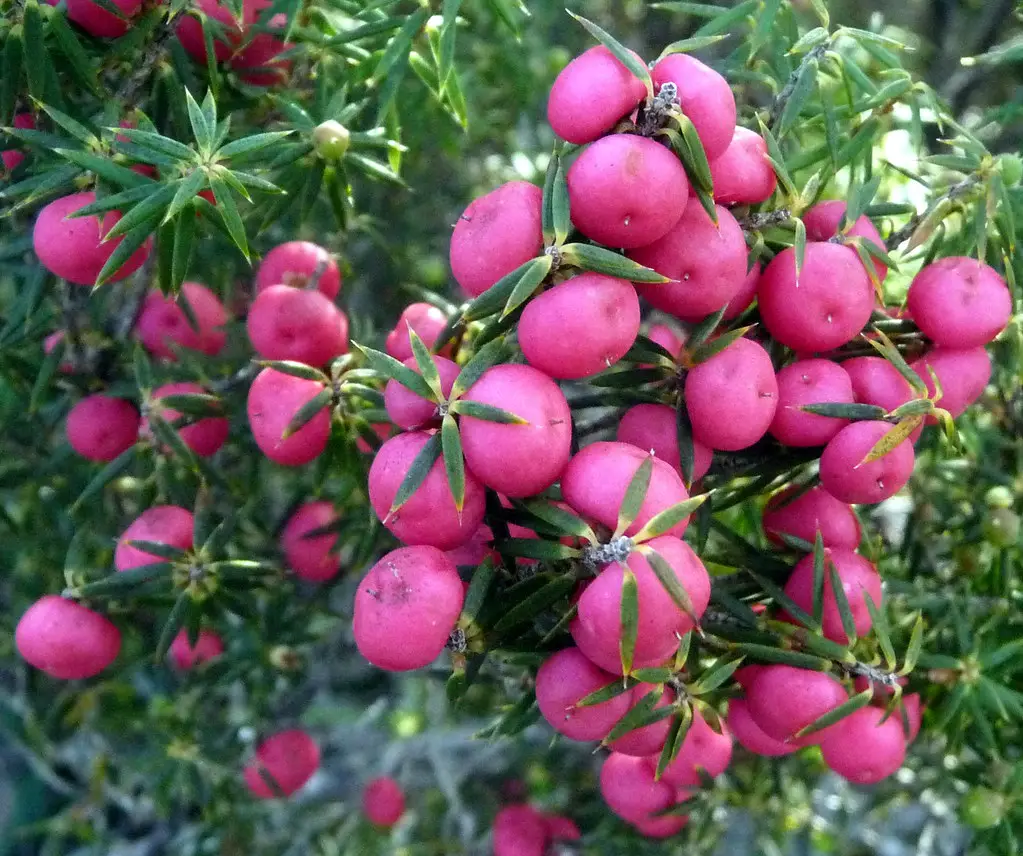
A UNESCO World Heritage Site and one of Tasmania’s most visited natural attractions, Cradle Mountain-Lake St Clair National Park is a stunning wilderness area that encompasses a diverse range of landscapes, from rugged mountains and highland lakes to ancient rainforests and alpine moors.
What to see or do: Hiking is the main attraction here, with a network of over 20 trails to choose from, ranging from short and easy walks to multi-day expeditions. Be sure to hike to the summit of Cradle Mountain for incredible views of the surrounding landscape. Other popular activities include wildlife spotting (look out for wombats, echidnas, and Tasmanian devils), fishing, kayaking, and camping.
Don’t miss: Dove Lake is one of the park’s most iconic sights, with the mirrored image of Cradle Mountain reflected in its glassy waters. Take a leisurely stroll along the lakeside track to fully appreciate the beauty of the scene. You’ll also want to visit the historic Waldheim Chalet, built by Austrian-born Gustav Weindorfer in the early 1900s.
Insider travel tips: – The weather can be unpredictable in the highlands, so be sure to pack warm clothes, rain gear, and sturdy hiking boots.
2. Wineglass Bay
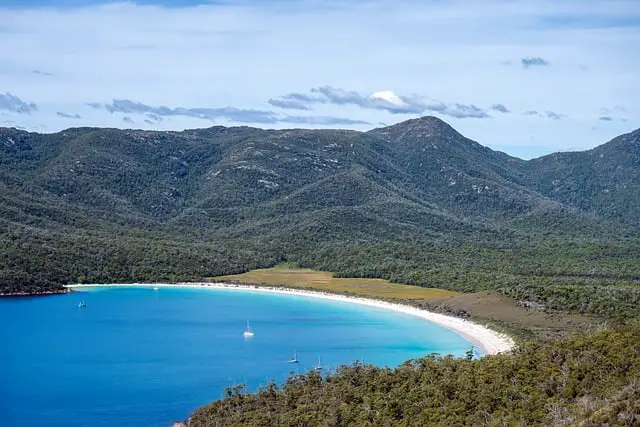
Wineglass Bay is a picturesque crescent-shaped beach located in Freycinet National Park on the east coast of Tasmania, Australia.
What to see or do: – Take a leisurely stroll along the Wineglass Bay Lookout track and enjoy the stunning panoramic views.
Don’t miss: – Watching the sunrise or sunset over the beautiful bay, it’s truly a magical experience.
Insider travel tips: – The hiking trails can be steep and strenuous, so wear comfortable shoes and be prepared for a workout.
3. Bay of Fires

A breathtaking stretch of coastline located on the northeastern coast of Tasmania, known for its crystal-clear waters, white sands, and red-orange lichen-covered boulders.
What to see or do: Admire the stunning scenery, go for a swim, relax on the beach, and take a walk along the coast. You can also go fishing, kayaking, or camping in the area.
Don’t miss: The Bay of Fires Conservation Area, which spans over 50 km of coastline, and the secluded coves and bays that offer a peaceful and quiet hideaway.
Insider travel tips: Visit early in the morning to avoid crowds and catch a beautiful sunrise. Bring your own supplies and camping gear for a unique wilderness experience. And don’t forget to respect and protect the environment by leaving no trace behind.
4. Mount Wellington
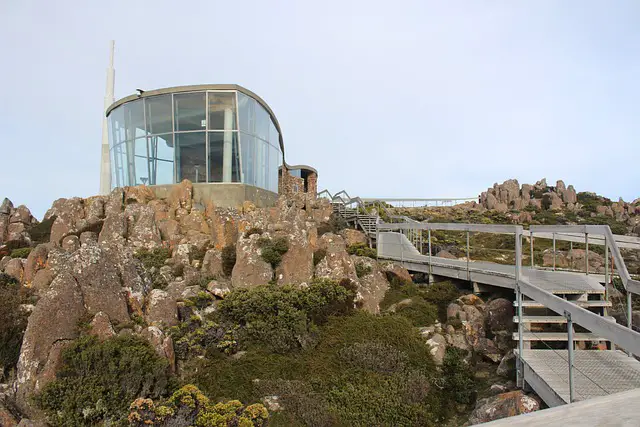
Mount Wellington is a majestic mountain located in Hobart, Tasmania, with an elevation of 1,271 meters.
What to see or do: The mountain offers panoramic views of Hobart and its surrounding areas. You can take a scenic drive to the summit or hike up the mountain via various trails. The mountain is also popular for cycling, mountain biking, and rock climbing.
Don’t miss: The summit of Mount Wellington provides a breathtaking view of Hobart and its surrounding areas. Make sure to check out the Pinnacle Observation Shelter, which offers stunning views, particularly during sunrise or sunset.
Insider travel tips: Be prepared for varying weather conditions. It’s advisable to check the weather forecast before starting your journey. Wear comfortable shoes and bring enough food and water, particularly if you plan to hike up the mountain. It’s also recommended to bring warm clothing, particularly during the colder months, as temperatures can drop significantly at the summit.
5. Hastings Caves and Thermal Springs
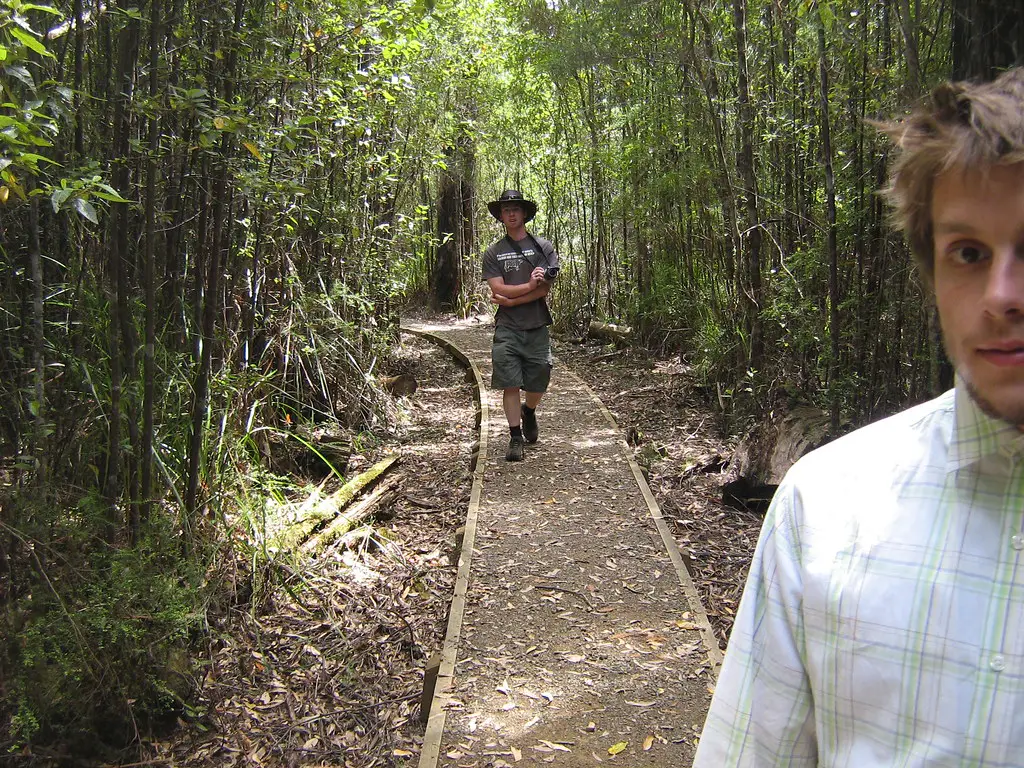
Hastings Caves and Thermal Springs is a natural park located in Southern Tasmania that features underground caves and geothermal pools.
What to see or do: Explore the dark and magnificent dolomite caves, featuring stalactites and stalagmites. Take a dip in the naturally heated thermal pool, where the water temperature reaches up to 28 degrees Celsius. Enjoy scenic bushwalks and take in the picturesque views of the surrounding forest.
Don’t miss: Don’t miss the opportunity to relax and rejuvenate in the thermal pool. Make sure to visit Newdegate Cave, the largest dolomite cave in Australia.
Insider travel tips: Bring along a towel and swimwear to enjoy the thermal pool. Don’t forget to wear comfortable walking shoes for bushwalks. It’s recommended to book cave tours in advance, as they can sell out quickly, especially during peak season.
6. Russell Falls
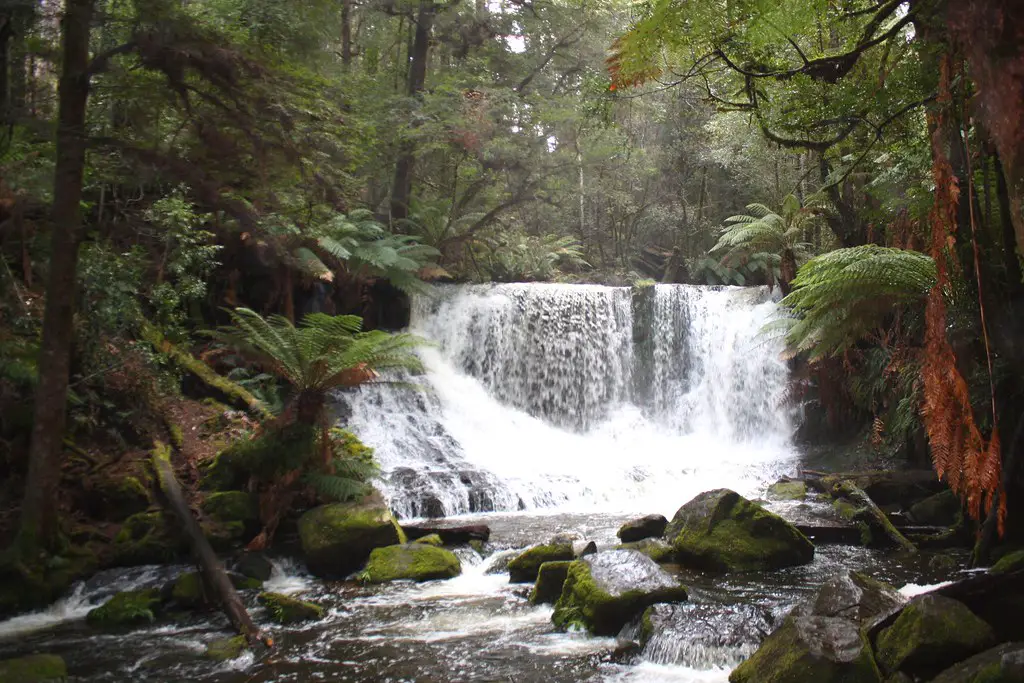
Russell Falls is a stunning tiered waterfall located in Mount Field National Park in Tasmania, Australia.
What to see or do: Visitors can enjoy a leisurely 20-minute walk through the lush forest to reach the falls. The short walk is suitable for all ages and offers a glimpse of Tasmania’s unique flora and fauna.
Don’t miss: The best spot to capture the beauty of Russell Falls is from the viewing platform located just a short walk from the car park. Don’t forget to bring your camera to capture the postcard-worthy views!
Insider travel tips: – To avoid crowds, it is recommended to visit early in the morning or later in the afternoon.
7. Bruny Island
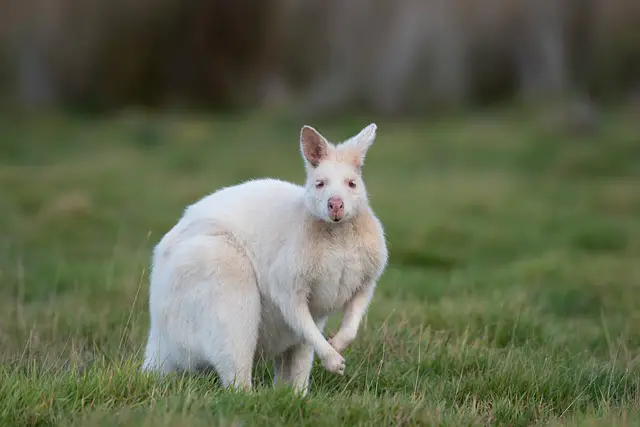
Bruny Island is an island located off the southeast coast of Tasmania, Australia. It is known for its stunning scenery, rugged coastline, and abundance of wildlife.
What to see or do: Take a tour of the Bruny Island Lighthouse for breathtaking views of the coastline.
Don’t miss: The Neck, a narrow strip of land connecting the north and south parts of the island, is a must-visit location for stunning views of the surrounding waters and picturesque rock formations.
Insider travel tips: Pack warm clothing, as the island can get chilly, even in summer.
8. Hartz Mountains National Park
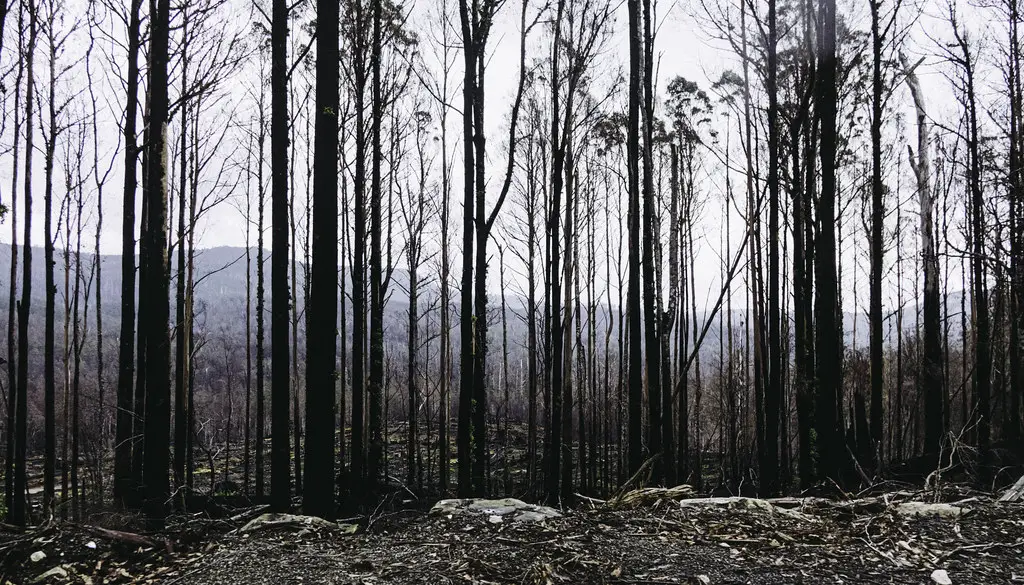
Hartz Mountains National Park is a protected wilderness area located in Southern Tasmania, Australia. The park is home to a diverse range of flora, fauna, and landscapes including mountain ranges, glacial lakes, and alpine vegetation.
What to see or do: – Hike the various trails ranging from easy to challenging, and take in breathtaking views of the surrounding mountains and lakes
Don’t miss: – The Arve Falls, a stunning waterfall set in lush rainforest surroundings
Insider travel tips: – The park can experience rapidly changing weather conditions, so make sure to bring appropriate clothing and gear
9. Franklin-Gordon Wild Rivers National Park
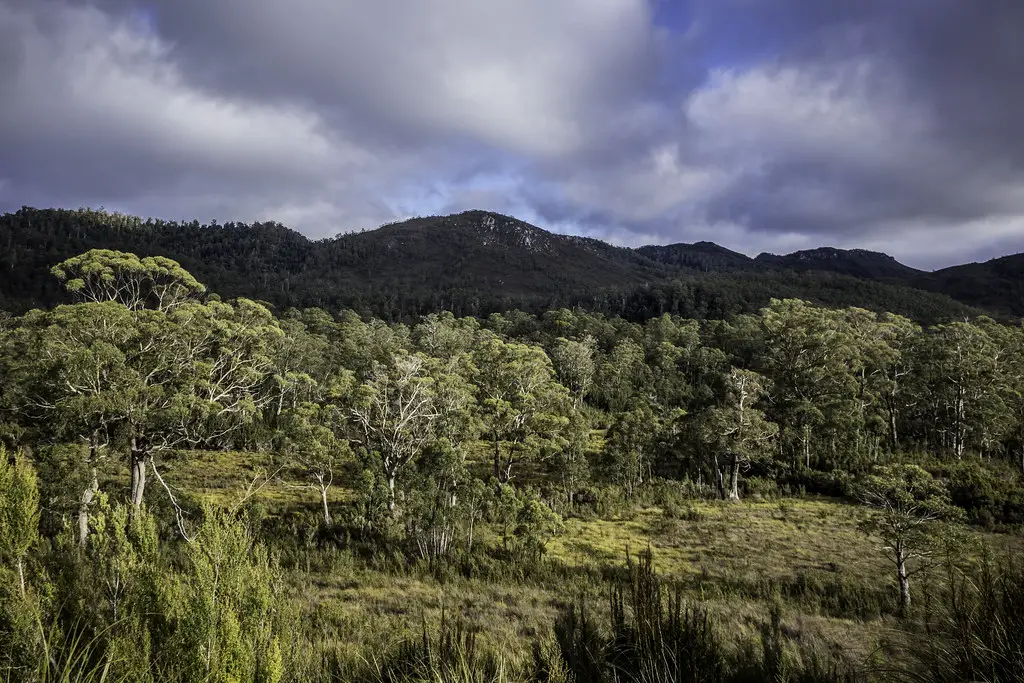
Franklin-Gordon Wild Rivers National Park is a wilderness area in western Tasmania, covering 4470 square kilometres.
What to see or do: Raft down the Franklin River and experience breathtaking views of the park’s rugged wilderness.
Don’t miss: The impressive Gordon Dam, standing at a whopping 140m high.
Insider travel tips: The park is only accessible by car, so make sure you have enough fuel and supplies before embarking on your adventure.
10. Mount Field National Park
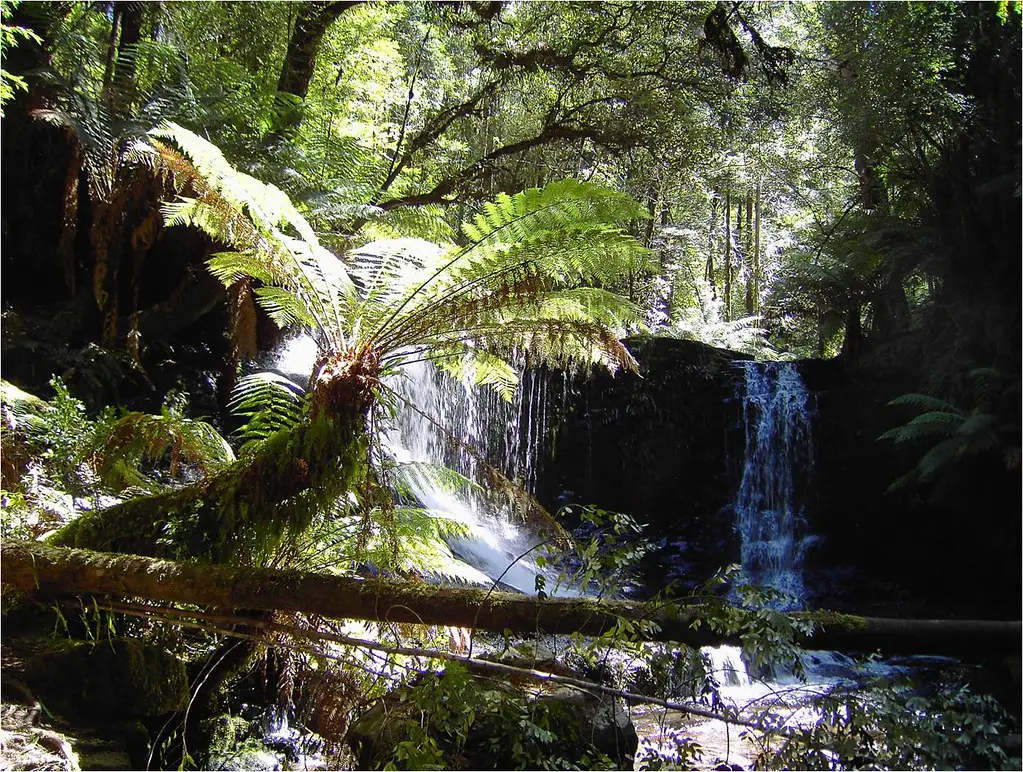
Mount Field National Park is a beautiful natural reserve in Tasmania, Australia, with stunning landscapes, diverse wildlife, and a rich history.
What to see or do: Hike through the park’s trails and discover breathtaking waterfalls, including the famous Russell Falls.
Don’t miss: Russell Falls, Horseshoe Falls, Tall Trees Walk, Pandani Grove, and the Mount Field Summit.
Insider travel tips: – Dress up appropriately for the weather as it can change rapidly.
11. Maria Island National Park
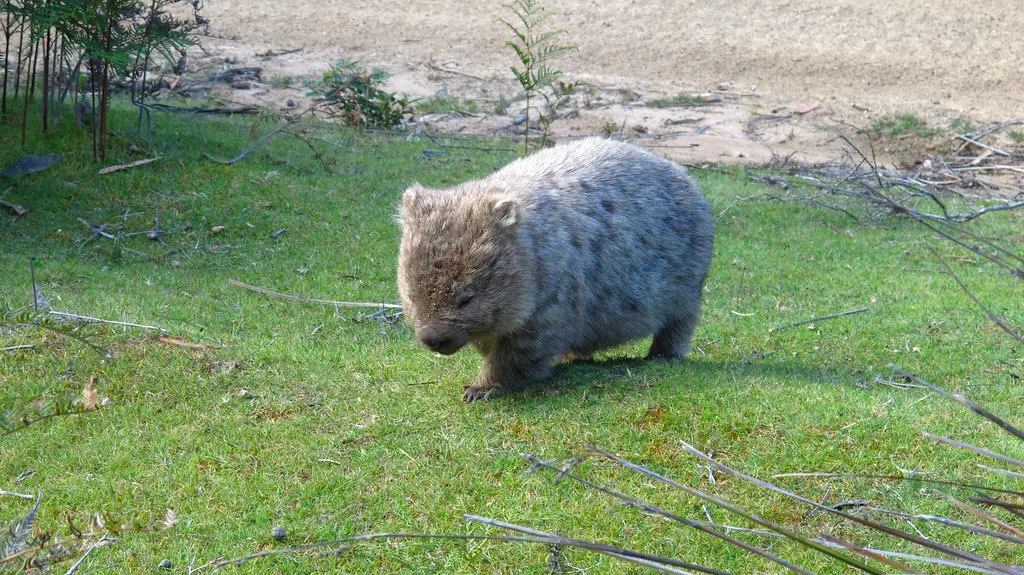
Maria Island National Park is a protected area on an island located off the east coast of Tasmania, Australia. It is known for its diverse wildlife, stunning scenery, and rich cultural heritage.
What to see or do: Explore the island’s historic ruins, including the former convict settlement of Darlington.
Don’t miss: – Seeing the enchanting albino peacocks that roam around Darlington.
Insider travel tips: – Camping is permitted on the island, but be sure to book in advance during peak season.
12. Cataract Gorge
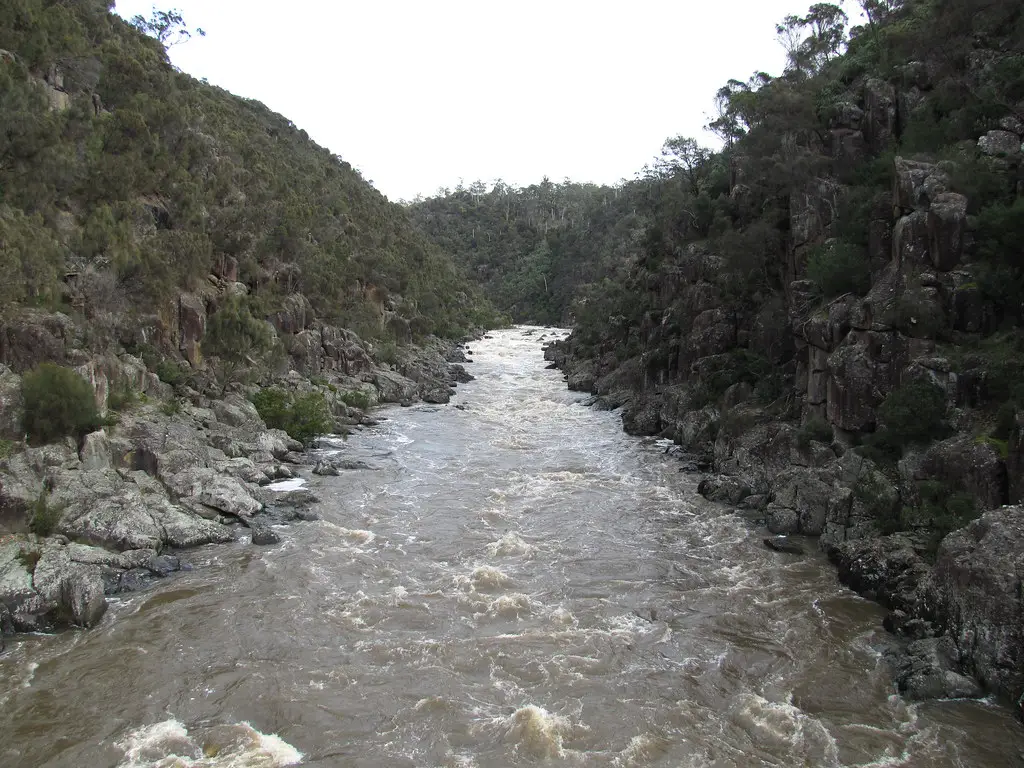
A natural gorge located in the heart of Launceston, Tasmania.
What to see or do: Take a walk along the hiking trail and enjoy the stunning views of the picturesque landscape. For the adventurous, there are several activities such as a chairlift ride, swimming pool, and a bridge spanning the South Esk river.
Don’t miss: The peacocks that roam around the area, as well as the scenic view of the gorge from the suspension bridge.
Insider travel tips: Bring comfortable walking shoes and warm clothing, even during the summer season. Don’t forget to visit the John Hart Conservatory, which showcases a variety of plants and flowers. Additionally, pack a picnic to enjoy near the river, or grab a bite to eat from the onsite restaurant.
13. Walls of Jerusalem National Park
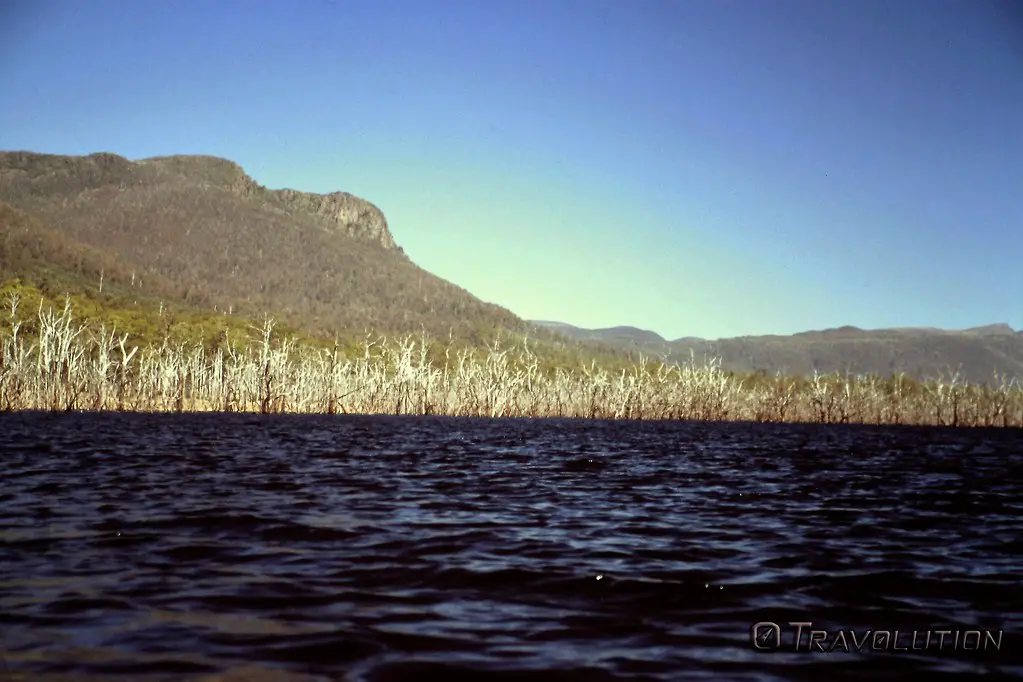
Walls of Jerusalem National Park is a UNESCO World Heritage-listed wilderness area located in central Tasmania.
What to see or do: – Hiking is the most popular activity in the park, with plenty of trails ranging from easy walks to more challenging treks.
Don’t miss: – The famous Walls of Jerusalem trek, a multi-day hike that takes you through some of the most stunning landscapes in the park.
Insider travel tips: – Be prepared for changing weather conditions, as the park’s alpine environment can be unpredictable.
14. Mount Roland
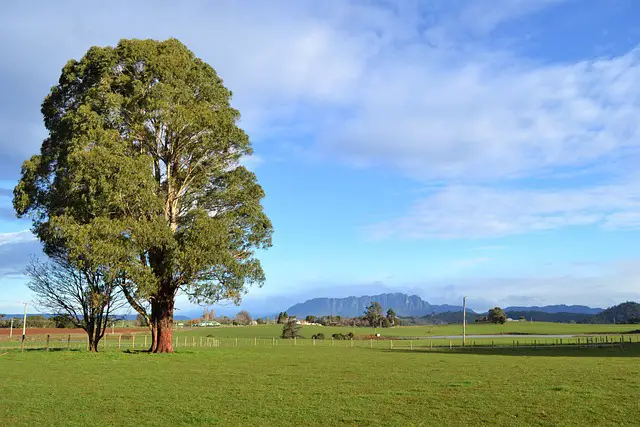
Mount Roland is a mountain located in the Central Highlands of Tasmania.
What to see or do: Hike to the summit of Mount Roland, which offers stunning views of the surrounding landscape. The hike is challenging but rewarding, taking about 5-6 hours round trip. Alternatively, take one of the shorter trails that lead to various lookout points with panoramic vistas.
Don’t miss: The views from the top of Mount Roland are truly spectacular and should not be missed. If you’re lucky, you may even catch a glimpse of the endemic Tasmanian devil or spotted-tail quoll on your hike.
Insider travel tips: Be prepared for sudden weather changes as the mountain can be subject to strong winds and rain. It is recommended to bring plenty of water and food, as well as appropriate hiking gear. Additionally, make sure to check for fire bans and park closures before heading out, as these can be common during the summer months. Finally, consider staying in the nearby town of Sheffield, known for its murals and arts scene, which makes for a great base camp for exploring the mountain and its surroundings.
15. Lake St Clair
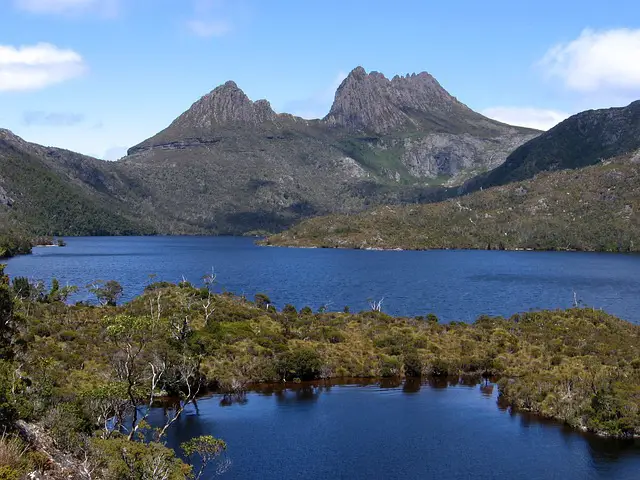
Lake St Clair is a pristine freshwater lake located in the Tasmanian Wilderness World Heritage Area in Tasmania, Australia.
What to see or do: – Go on a scenic boat cruise that takes you around the lake along with a guided tour to explore the wilderness surroundings.
Don’t miss: Don’t miss a hike to the popular Cradle Mountain which is just an hour drive away from Lake St Clair.
Insider travel tips: – The best time to visit is during the autumn season, from March to May when the weather is pleasant and the trees are turning beautiful shades of yellow and orange.
16. Mole Creek Karst National Park
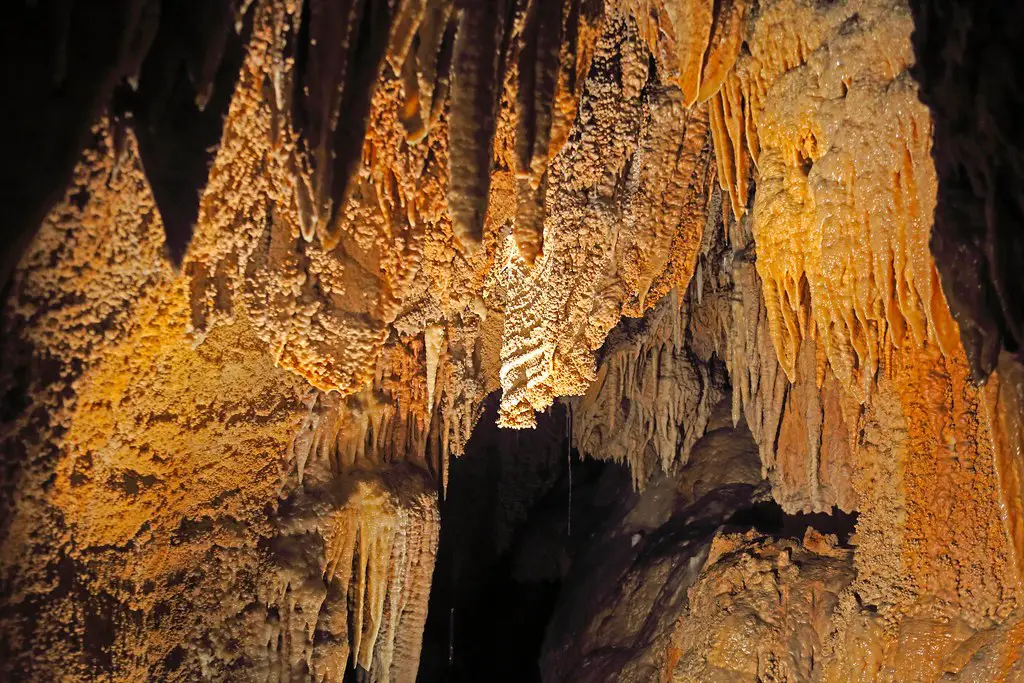
Mole Creek Karst National Park is a protected area in Tasmania known for its stunning caves, breathtaking limestone formations, and diverse wildlife.
What to see or do: Explore the intricate underworld of the cave systems in Marakoopa and King Solomons Caves, marvel at the Glow Worms, and witness the crystal clear underground streams. Take a scenic walk or hike through the lush rainforest to see the park’s towering cliffs, underground rivers, and spectacular karst landscape.
Don’t miss: Don’t miss the chance to see the magnificent underground formations, including delicate stalactites, stalagmites, and flowstones. A highlight is the Great Cathedral Cave in King Solomons Cave, showcasing an impressive formation called the “Christmas Tree”.
Insider travel tips: Book a guided tour to make the most of your visit, and wear comfortable shoes and warm clothing as the caves can be chilly. Visit early or late in the day to avoid the crowds, and be sure to keep an eye out for the native Tasmanian wildlife, like wallabies and platypus. Additionally, nearby Gunns Plains is known for its cheese factory and the Honeycomb Cave, which is worth a visit.
17. Narawntapu National Park
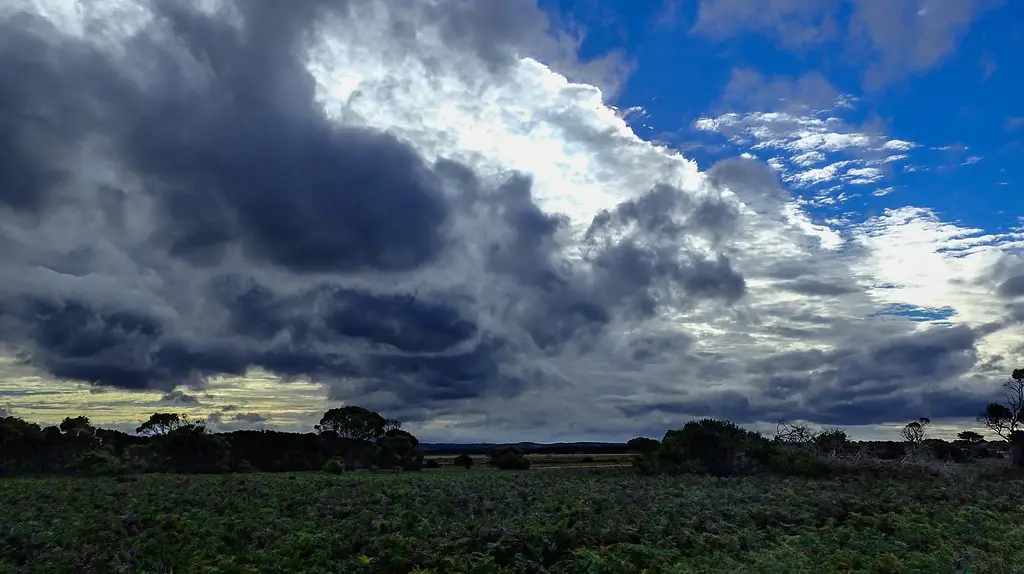
Narawntapu National Park is a coastal nature reserve located in the northern region of Tasmania.
What to see or do: The park offers a diverse landscape of wetlands, grasslands, and forests, making it a haven for wildlife. Visitors can expect to see kangaroos, wallabies, and wombats, as well as a variety of bird species. The park also features several walking trails of varying difficulty, perfect for exploring the unique scenery.
Don’t miss: A highlight of Narawntapu National Park is the sunset viewing spot at Bakers Beach. Watching the sun setting over the ocean is a breathtaking sight, and a must-see for all visitors.
Insider travel tips: – The best time to see wildlife is early morning or late in the day
18. Rocky Cape National Park
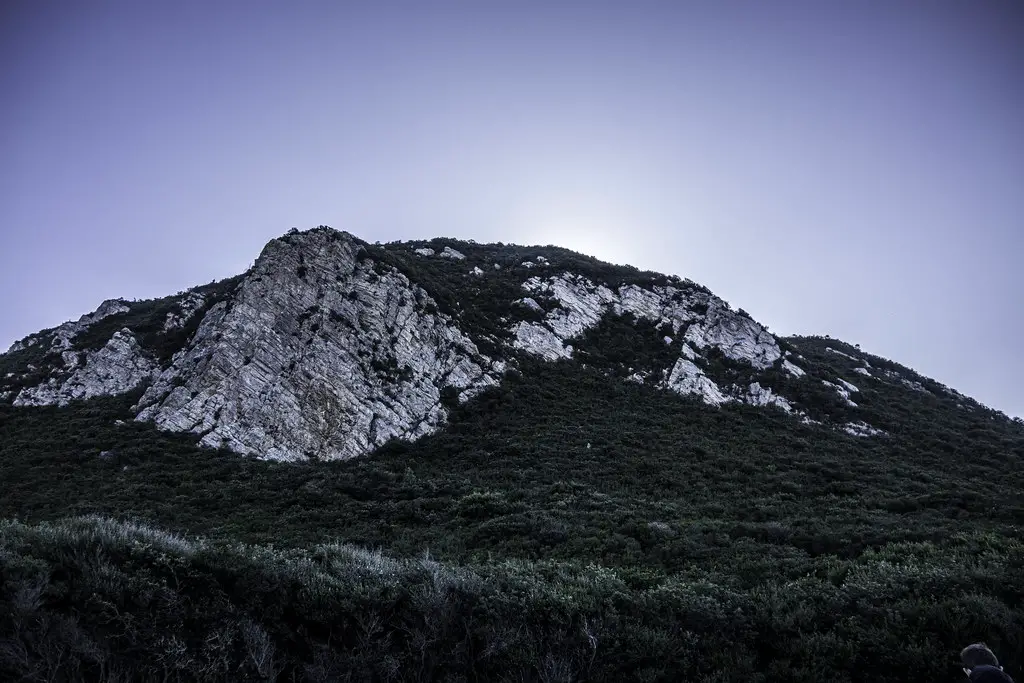
Rocky Cape National Park is a stunning coastal reserve located on the northwest coast of Tasmania, 420 km northwest of Hobart.
What to see or do: – Explore the rocky headlands and secluded beaches.
Don’t miss: – The breathtaking views from the Highfield Point Lookout.
Insider travel tips: – The park is accessible by car or bus from Burnie, which is about a 25-minute drive away.
19. Ben Lomond National Park
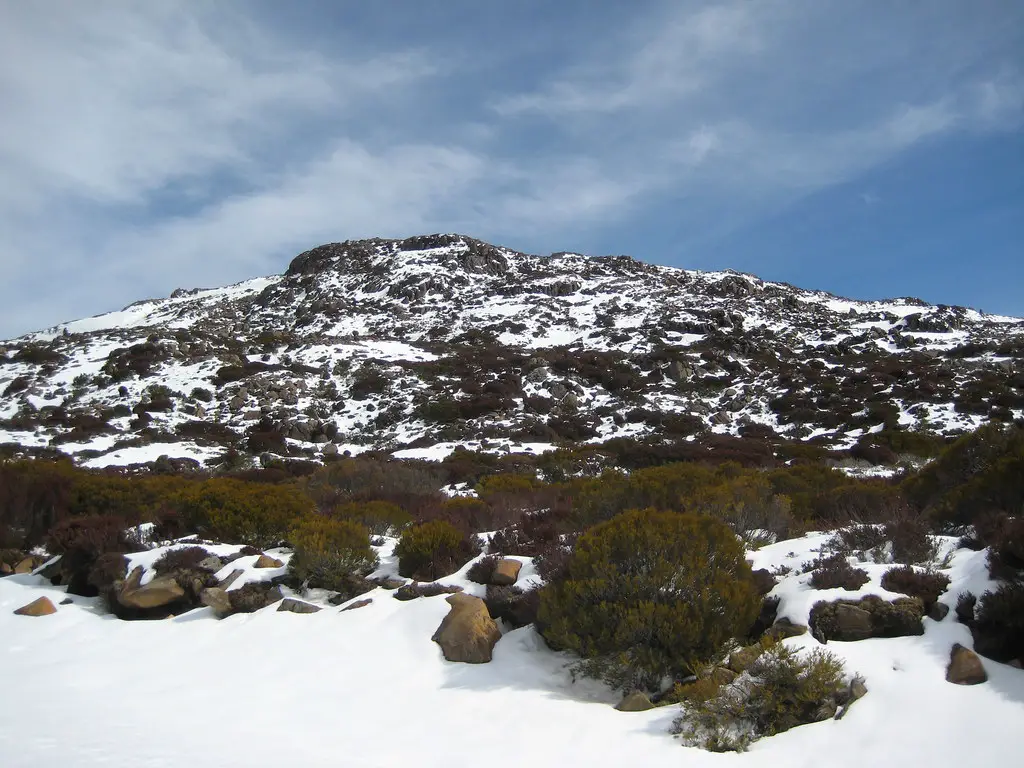
Ben Lomond National Park is located in northeastern Tasmania, Australia, and is a natural wonderland that boasts alpine fields, numerous peaks, and incredible scenery.
What to see or do: Visitors to Ben Lomond National Park can participate in numerous activities such as skiing, snowboarding, bushwalking, rock climbing, mountain biking, and more. For hiking enthusiasts, the challenging summit trail offers spectacular panoramic views of the surrounding mountains and valleys.
Don’t miss: Experience the thrill of the snow by visiting the Ben Lomond Snow Sports complex, which offers activities such as skiing and snowboarding. Visitors can also go on the popular Jacob’s ladder road, known for its 4km stretch of hair-raising twists and turns, and stunning views.
Insider travel tips: – The best time to visit is during the winter months (June to September) for snow activities or in summer (December to February) for hiking and bushwalking.
20. Three Capes Track
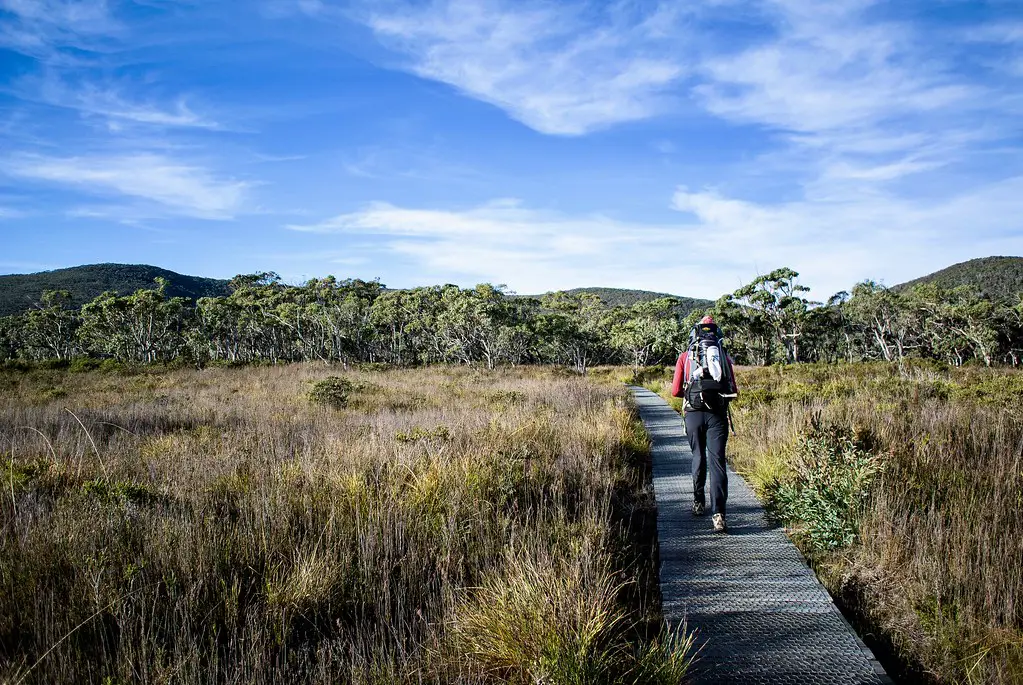
The Three Capes Track is a stunning 46-kilometer hiking trail located on the Tasman Peninsula in Tasmania, Australia.
What to see or do: It takes you on a scenic journey through the Tasman National Park, offering breathtaking views of natural beauty, including towering sea cliffs, rugged coastlines, and diverse wildlife.
Don’t miss: Make sure to keep an eye out for unique wildlife, such as Tasmanian devils, wombats, and echidnas, as well as the historic ruins of Australia’s convict past.
Insider travel tips: Book your trip in advance, as visitor numbers are limited to preserve the natural environment. Also, be prepared for variable weather conditions, as temperatures and winds can change rapidly. Additionally, stay in the well-equipped cabins and enjoy the fantastic meals along the way.
21. Tasman National Park
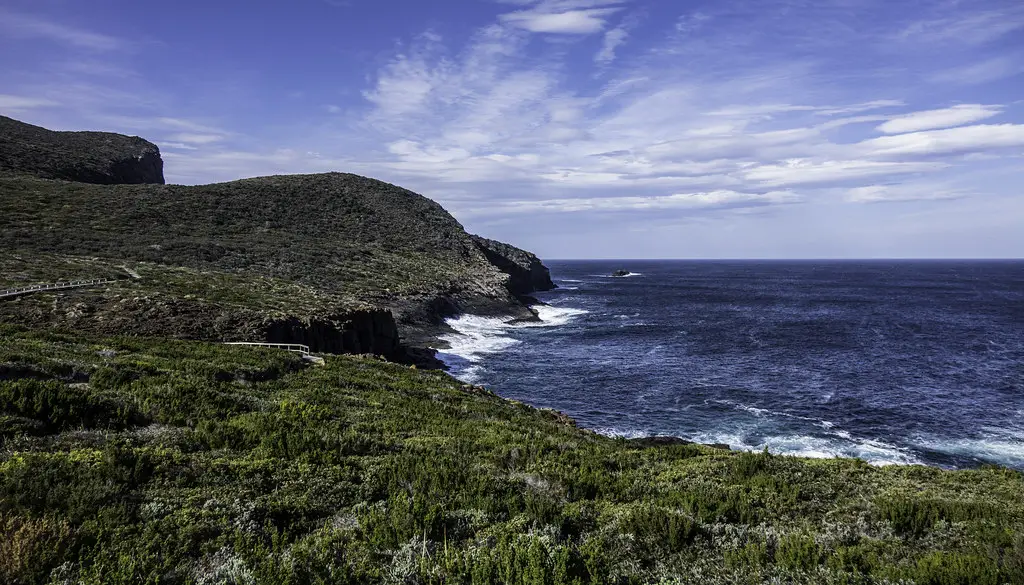
Tasman National Park is a rugged and wild national park located on the southeastern coast of Tasmania, Australia.
What to see or do: Hike the Three Capes Track – a 48 km (30 mi) track that takes you along beautiful coastal vistas.
Don’t miss: Don’t miss a visit to Cape Hauy, where you can see the famous Totem Pole – a tall, narrow sea stack in the ocean.
Insider travel tips: Bring warm clothing, even in summer, as temperatures can drop quickly.
22. Liffey Falls
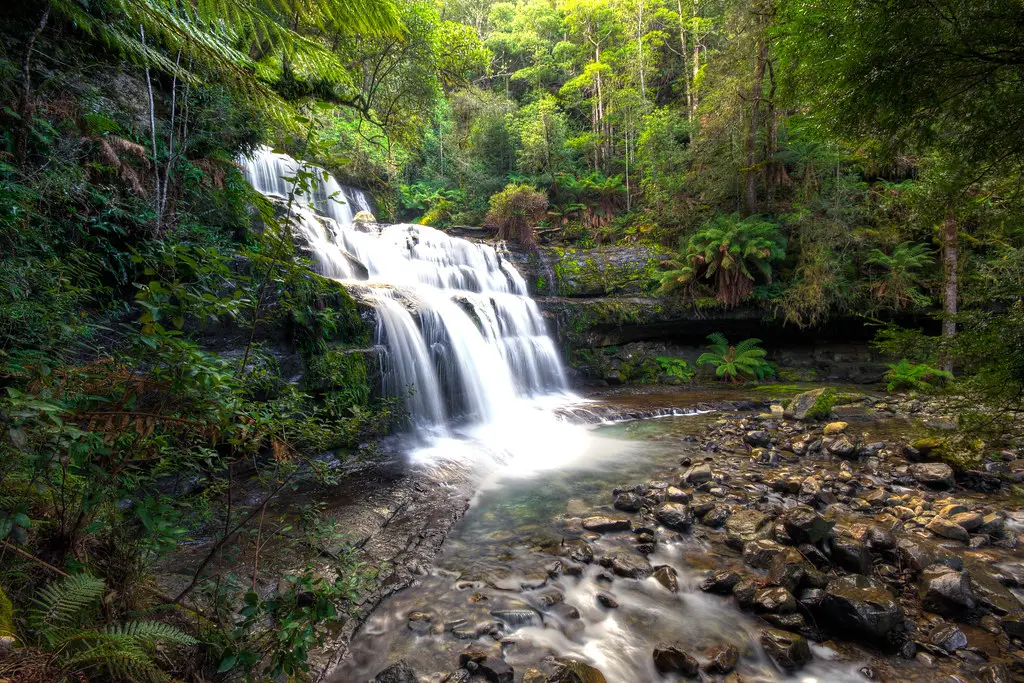
Liffey Falls is a stunning series of cascading waterfalls located in the Tasmanian wilderness.
What to see or do: Witness the beauty of the four main waterfalls, each with its own unique charm. Take in the lush greenery and tranquility of the surrounding forest while on the walking track.
Don’t miss: The upper falls, with a height of 30 meters, is the most magnificent of them all. It’s a photographer’s paradise, so don’t forget your camera.
Insider travel tips: – Carry a raincoat as the area is prone to sudden weather changes.
23. Tasmanian Wilderness World Heritage Area
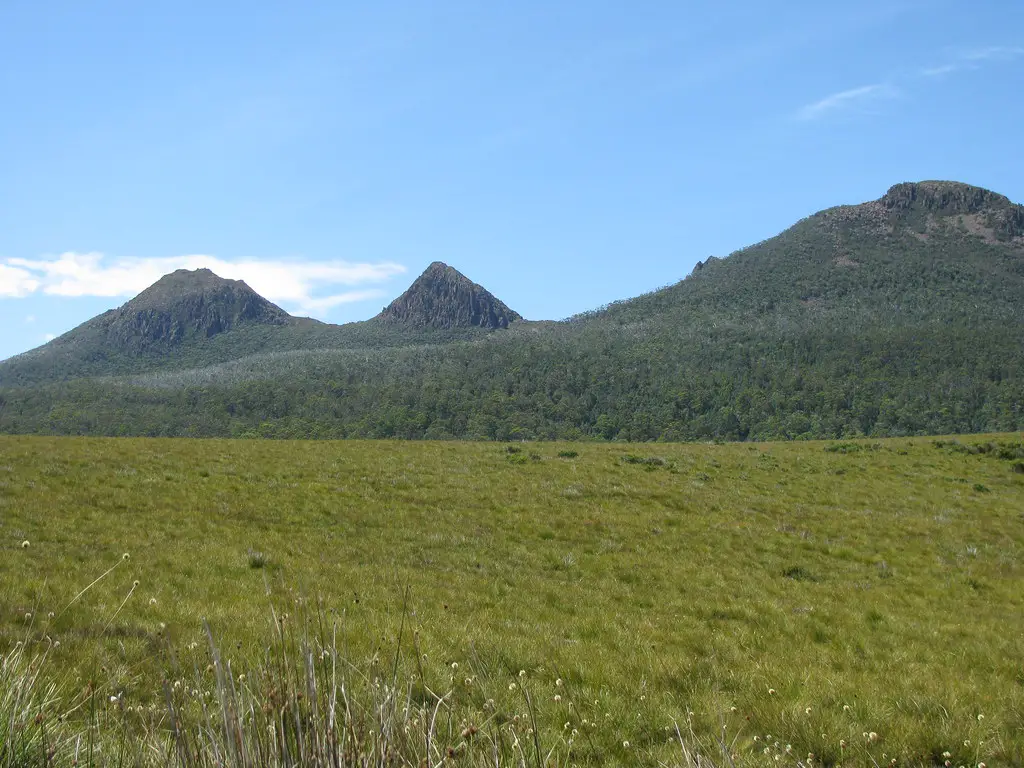
Tasmanian Wilderness World Heritage Area is a vast and remote wilderness region located in Tasmania, Australia.
What to see or do: Explore the untouched wilderness, bushwalk along the rugged terrain, marvel at the unique flora and fauna, witness the stunning landscapes, and discover the ancient Aboriginal history.
Don’t miss: Cradle Mountain, Lake St Clair, Franklin River, Gordon River, Walls of Jerusalem National Park, and the Tasmanian Devil.
Insider travel tips: Plan your trip beforehand, as some areas may require permits or advanced booking. Check the weather forecast and be prepared for unpredictable weather conditions. Also, consider joining a guided tour or hiring a local guide for a more insightful experience.
24. The Nut

A prominent rocky outcrop located on the north-west coast of Tasmania.
What to see or do: Visitors can explore the hiking trails around The Nut and witness spectacular views of the Bass Strait and coastline. There is also a chairlift available offering a scenic ride to the top of The Nut.
Don’t miss: The breathtaking panoramic views from the top of The Nut, especially during sunset.
Insider travel tips: Be sure to wear comfortable hiking shoes and bring layers as the weather can change quickly. The chairlift is a popular attraction, so it’s recommended to arrive early in the day to avoid long lines.
25. Alum Cliffs
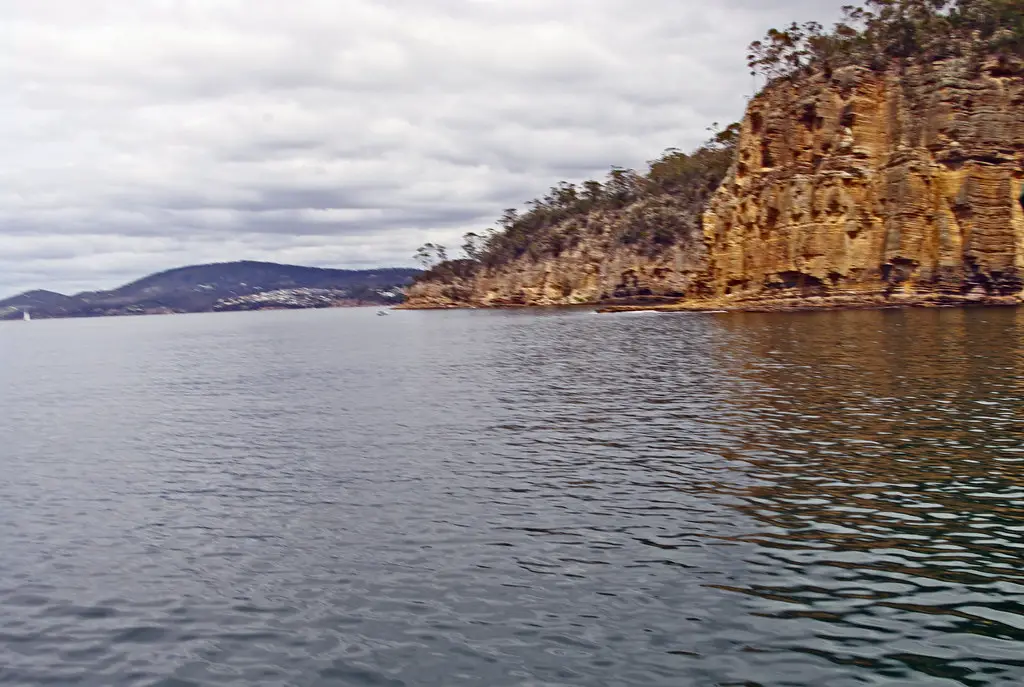
Alum Cliffs is a natural reserve located in the Tamar Valley near Beauty Point in Tasmania. It covers an area of approximately 47 hectares and is known for its stunning panoramic views, unique geological formations and diverse flora and fauna.
What to see or do: Visitors can take a leisurely walk along the well-maintained trail that winds through the reserve and enjoy the breathtaking views of the Tamar River, the surrounding mountains and hills, and the dense forests that blanket the landscape.
Don’t miss: One of the main attractions of Alum Cliffs is the geological formations that have been beautifully sculpted by time and nature. These basalt cliffs rise hundreds of meters above the river and are adorned with intricate patterns and textures that are a delight to the eyes.
Insider travel tips: – The best time to visit Alum Cliffs is between April and November when the weather is mild and the foliage is at its peak.
26. Notley Fern Gorge
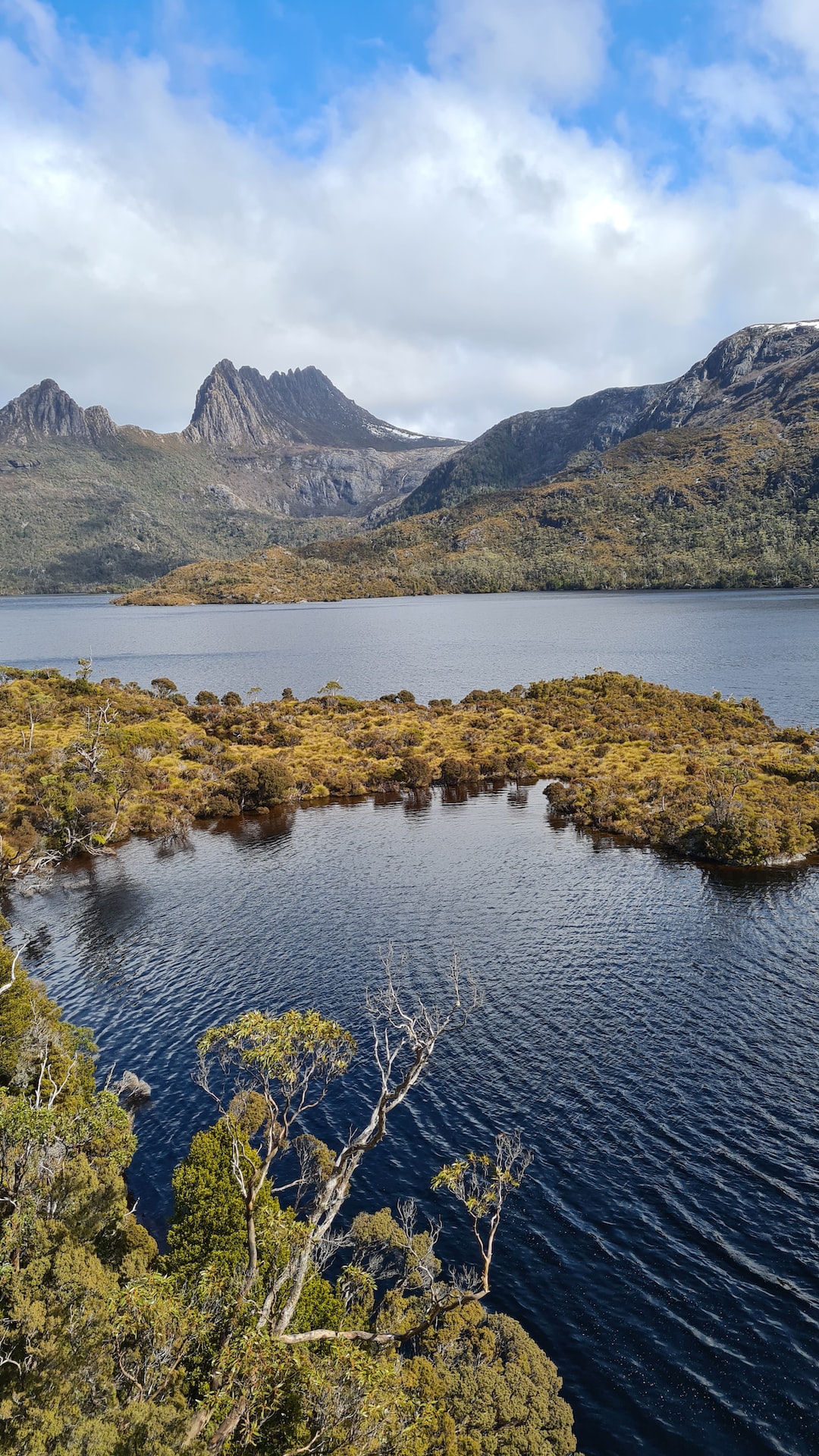
Notley Fern Gorge is a beautiful natural reserve located in Tasmania, known for its stunning waterfalls, lush forest, and diverse wildlife.
What to see or do: Take a leisurely stroll along the well-maintained trails, immerse yourself in the peaceful surroundings, and marvel at the impressive waterfalls cascading down the rocky cliffs. Keep an eye out for the native flora and fauna, including Tasmanian devils, eastern quolls, and wedge-tailed eagles.
Don’t miss: Don’t miss the opportunity to stand on the suspension bridge for a breathtaking panoramic view of the gorge and its waterfall. If you visit during spring, you’ll be in for a treat as the area bursts into color with blooming wildflowers.
Insider travel tips: – Wear comfortable shoes suitable for hiking, as some parts of the trails can be steep and rocky.
💪 Support independent web, support us: